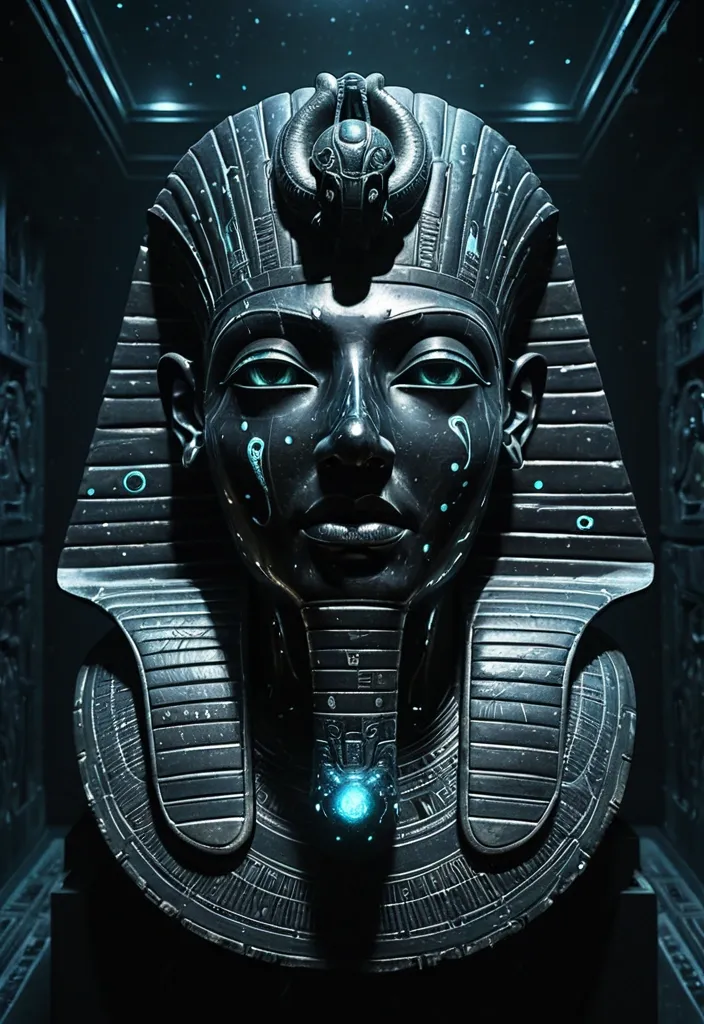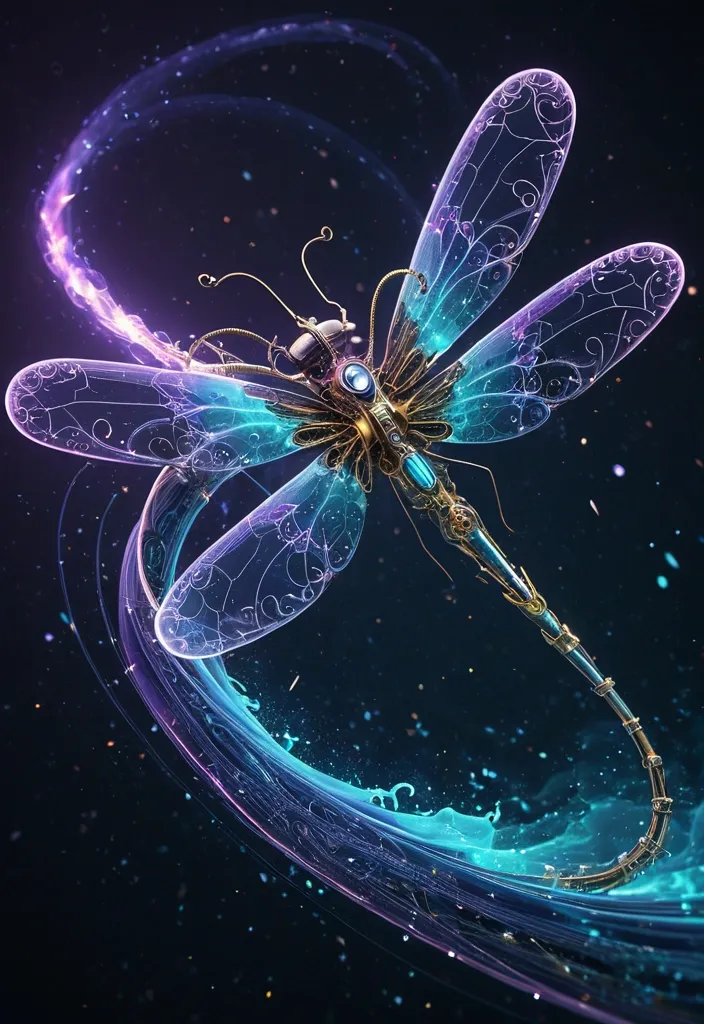Search Results for mecha
Explore AI generated designs, images, art and prompts by top community artists and designers.

A majestic clockwork group of ants has successfully transported a Paneer slice , larger than any of them , back to their colony entrance. The scene is depicted from a worm's-eye view , making the Paneer slice appear monumental and the ants' effort heroic. Tiny tools , fashioned from twigs and leaves , are visible around the Paneer slice. The background is a soft blur of green foliage , emphasizing the small scale of the achievement. The style is a fusion of steampunk aesthetics , hyper-realistic rendering of metallic textures , and a touch of dark fantasy , inspired by the detailed mechanical designs of Ian McQue and the atmospheric cityscapes of Leonid Afremov. ,

((Best Quality , 8K , Masterpiece: 1.3)) , Upper Body (1.3) , Colossal (5) , Outstanding Style , Gentle Face , Amitabh Bachchan is immortal in the present tense. In 2053. In the city of Switzerland. Walking through the city. In full growth Stylishly dressed. With magic dem out smoking pipe , Highly detailed face and skin texture , Detailed eyes , Double eyelid , outer space , vanishing point , super highway , high speed , digital render , digital painting , beeple , noah bradley , cyril roland , ross tran , trending on artstation , mecha ,

Steampunk girl , pretty face , mischievous , unique , highly detailed full body portrait , mechanical , gritty , concept art , character design , backlit by fire sparks , volumetric lighting , dynamic pose , fluid movement , digital painting , digital illustration , extreme detail , digital art , 4k , ultra hd , , fantasy art , unreal engine , cgsociety , octane render ,

Steampunk girl , pretty face , mischievous , unique , highly detailed full body portrait , mechanical , gritty , concept art , character design , backlit by fire sparks , volumetric lighting , dynamic pose , fluid movement , digital painting , digital illustration , extreme detail , digital art , 4k , ultra hd , Anna Dittmann , fantasy art , , unreal engine , cgsociety , octane render ,

Steampunk girl , pretty face , mischievous , unique , highly detailed full body portrait , mechanical , gritty , concept art , character design , backlit by fire sparks , volumetric lighting , dynamic pose , fluid movement , digital painting , digital illustration , extreme detail , digital art , 4k , ultra hd , Anna Dittmann , fantasy art , peter mohrbacher , alphonse mucha , trending on artstation , karol bak , kim tschang yeul , yoshitaka amano , mark brooks , unreal engine , cgsociety , octane render ,

A technically detailed , futuristic , streamlined alien space battle cruiser , with a strange eagle skull smoothly integrated into its metallic hull , flying past a large planet. The ship appears as a pure space predator. Starfield background with scattered nebulae , illuminated by a distant binary star system creating dramatic rim lighting and casting long , deep shadows. Digital matte painting , awe-inspiring scale , reminiscent of the works of H.R. Giger for its biomechanical integration and Syd Mead for its sleek futurism. ,

Create aesthetic anime screengrab frames in the style of Akira , directed by Katsuhiro Otomo , capturing its cyberpunk aesthetic , mechanical designs , and dynamic action sequences. This design will feature intricate cityscapes , futuristic technology , and character expressions. Expect a visually striking style reminiscent of the film's blend of science fiction and anime aesthetics. Ideal for fan arts , character designs , narrative scenes , and concept illustrations. ,

Close-up of a beautiful woman with red hair , wearing a t-shirt with a hole , illuminated by dark luminescence. The scene features elements of celestial bodies , snow , a crescent moon , a demon , a male symbol , a skull , and mist , rendered in a haunting , atmospheric style reminiscent of Zdzisław Beksiński's dark surrealism and H.R. Giger's bio-mechanical aesthetics. Moody , high-contrast lighting with deep shadows and glowing ethereal blues and purples. ar-9:16 ,

Close-up of a beautiful woman with red hair , wearing a t-shirt with a hole , illuminated by dark luminescence. The scene features elements of celestial bodies , snow , a crescent moon , a demon , a male symbol , a skull , and mist , rendered in a haunting , atmospheric style reminiscent of Zdzisław Beksiński's dark surrealism and H.R. Giger's bio-mechanical aesthetics. Moody , high-contrast lighting with deep shadows and glowing ethereal blues and purples ,

Creates a realistic Terminator-style portrait. Upload your photo and paste the prompt below. A more cinematic version , while Seedream is closer to realism and more accurately draws a portrait from a photo.Create a photo-realistic color portrait in a 4:3 vertical aspect ratio. I am wearing a military dress. The left side of my body remains human , while the right side (face neck upper torso under the shirt) is visible as a metallic cybernetic endoskeleton with mechanical parts and a glowing red robotic eye. The transition between skin and metal should appear realistic , with natural-looking scorched edges , slightly cracked fabric , subtle dried blood , and signs of battle damage (not a straight cut line). In backdrop a flowing , Giant Hulk , snarling under a sprawling , star-filled night sky , Glowing eyes , muscular , silhouette emerges from a mass of swirling. The Hulk is composed entirely of soft , fluid streaks that blend into one another: luminous white and pale gray at the head and shoulders , shifting into bright cyan. The head tilts gently downward , defined only by subtle curves and shadows formed by the color transitions. Cinematic dramatic lighting , dark , moody background , hyper-realistic sci-fi aesthetics of film quality , natural skin pores , no cartoons or illustrations , crisp 4K resolution. ,

Creates a realistic Terminator-style portrait. Upload your photo and paste the prompt below. A more cinematic version , while Seedream is closer to realism and more accurately draws a portrait from a photo.Create a photo-realistic color portrait in a 4:3 vertical aspect ratio. I am wearing a military dress. The left side of my body remains human , while the right side (face neck upper torso under the shirt) is visible as a metallic cybernetic endoskeleton with mechanical parts and a glowing red robotic eye. The transition between skin and metal should appear realistic , with natural-looking scorched edges , slightly cracked fabric , subtle dried blood , and signs of battle damage (not a straight cut line). In backdrop a flowing , Giant Hulk , snarling under a sprawling , star-filled night sky , Glowing eyes , muscular , silhouette emerges from a mass of swirling. The Hulk is composed entirely of soft , fluid streaks that blend into one another: luminous white and pale gray at the head and shoulders , shifting into bright cyan. The head tilts gently downward , defined only by subtle curves and shadows formed by the color transitions. Cinematic dramatic lighting , dark , moody background , hyper-realistic sci-fi aesthetics of film quality , natural skin pores , no cartoons or illustrations , crisp 4K resolution. ,

Creates a realistic Terminator-style portrait. Upload your photo and paste the prompt below. A more cinematic version , while Seedream is closer to realism and more accurately draws a portrait from a photo.Create a photo-realistic color portrait in a 4:3 vertical aspect ratio. I am wearing a military dress. The left side of my body remains human , while the right side (face neck upper torso under the shirt) is visible as a metallic cybernetic endoskeleton with mechanical parts and a glowing red robotic eye. The transition between skin and metal should appear realistic , with natural-looking scorched edges , slightly cracked fabric , subtle dried blood , and signs of battle damage (not a straight cut line). In backdrop a flowing , Giant Hulk , snarling under a sprawling , star-filled night sky , Glowing eyes , muscular , silhouette emerges from a mass of swirling. The Hulk is composed entirely of soft , fluid streaks that blend into one another: luminous white and pale gray at the head and shoulders , shifting into bright cyan. The head tilts gently downward , defined only by subtle curves and shadows formed by the color transitions. Cinematic dramatic lighting , dark , moody background , hyper-realistic sci-fi aesthetics of film quality , natural skin pores , no cartoons or illustrations , crisp 4K resolution. ,

A hyper-realistic depiction of a Indian man piloting a large , a man attached in the uploaded reference image (Keep face of person 100% accurate from the reference image) , industrial-style Bullet Train in a relaxed pose. The Bullet Train retains its bulky and mechanical design , constructed with silver-metallic armor and blue colors , realistic look. Dark blue “Indian Railway” logo integrated naturally on. The cabin made from glass like glass globe , revealing the pilot seated and drive , leaning slightly on one armrest , with a action and contemplative expression. His outfit is casual , light blue shirt and dark blue pant with the Bullet Train's imposing and heavy-duty aesthetic. The train's design includes large , rounded wheels for sped , and visible pistons and wiring for enhanced realism. The cabin is equipped with detailed controls , levers , and screens that showcase faint glowing interfaces. The silver-metallic surfaces of the Train have soft reflections , showing realistic lighting with highlights on edges and shadows in recessed areas. The angle of the view is a three-quarter front perspective with a slight tilt downwards to capture both the pilot and the intricate details of the Bullet Train's design. The background is Train station , lighting is soft and diffused , enhancing the realism by highlighting the Bullet Train's material textures and the natural skin tones of the pilot ,

A high-tech industrial robotic assembly machine with multiple articulated arms in a dynamic crouching pose , inspired by futuristic cyborg mecha design. The main robotic body is glossy yellow with black mechanical segments and gray glowing elements , showing sparks and energy trails from welding or high-speed motion. The surface is clean , high-poly , and ultra-detailed with realistic reflections and subtle wear. The background is workshop with soft shadows , with no text or logos. Realistic lighting , cinematic rendering , and photorealistic textures. Inspired by sci-fi robotics and advanced manufacturing technology. ,


Photorealistic full-length a 30-year-old beautiful pale european wavy auburn shoulder woman wearing spandex short sport outfit blue and bronze , with mechanical prostetic right hand and foot , barefoot. And a asian beautiful 30-year-old short brown hair woman same outfit , are fighting with training staff in a futuristic gym room , they're smiling. cinematic style ,

Photorealistic full-length a 30-year-old beautiful pale european wavy auburn shoulder woman wearing spandex short sport outfit blue and bronze , with mechanical prostetic right hand and foot , barefoot. And a asian beautiful 30-year-old short brown hair woman same outfit , are fighting with training staff in a futuristic gym room , they're smiling. cinematic style ,

A colossal , ancient Egyptian pharaoh's mask , carved from obsidian and inlaid with glowing hieroglyphs , floats ominously in the void of deep space. Nebulae swirl around it like cosmic dust , and distant , alien stars cast an eerie , phosphorescent light. The mask's eyes seem to gaze into the viewer's soul , hinting at unfathomable cosmic horrors. Rendered in a hyperrealistic cinematic style with dramatic lighting and a deep , unsettling atmosphere , reminiscent of H.R. Giger's biomechanical surrealism. ,

A flowing , Giant dragonfly , rendered in intricate clockwork and brass gears , swims through an abstract nebula of swirling digital data streams. The dragonfly bending into impossible angles , complex mechanism of interconnected parts , with glowing LED eyes peering out from the cosmic dust: electric blues , deep purples at the top and edge , shifting into bright cyan. The head tilts gently downward , defined only by subtle curves and shadows formed by the color transitions. perfect whale breaching a vast , calm ocean. Style: Celestial , ethereal , abstract , digital art smoking: Dramatic backlighting , bright glowing particles , contrasting dark background Composition: dynamic diagonal composition , upward gaze Details: Sparkling white waves and smoke , streaking white light trails , sense of movement and wonder , magical atmosphere Quality: High detail , 4K , Masterpiece , Rendered in Octane ,

A flowing , Giant spacecraft , rendered in intricate clockwork and brass gears , swims through an abstract nebula of swirling digital data streams. The spacecraft bending into impossible angles , complex mechanism of interconnected parts , with glowing LED eyes peering out from the cosmic dust: electric blues , deep purples at the top and edge , shifting into bright cyan. The head tilts gently downward , defined only by subtle curves and shadows formed by the color transitions. perfect whale breaching a vast , calm ocean. Style: Celestial , ethereal , abstract , digital art smoking: Dramatic backlighting , bright glowing particles , contrasting dark background Composition: dynamic diagonal composition , upward gaze Details: Sparkling white waves and smoke , streaking white light trails , sense of movement and wonder , magical atmosphere Quality: High detail , 4K , Masterpiece , Rendered in Octane ,

A flowing , Giant spacecraft , rendered in intricate clockwork and brass gears , swims through an abstract nebula of swirling digital data streams. The spacecraft bending into impossible angles , complex mechanism of interconnected parts , with glowing LED eyes peering out from the cosmic dust: electric blues , deep purples at the top and edge , shifting into bright cyan. The head tilts gently downward , defined only by subtle curves and shadows formed by the color transitions. perfect whale breaching a vast , calm ocean. Style: Celestial , ethereal , abstract , digital art smoking: Dramatic backlighting , bright glowing particles , contrasting dark background Composition: dynamic diagonal composition , upward gaze Details: Sparkling white waves and smoke , streaking white light trails , sense of movement and wonder , magical atmosphere Quality: High detail , 4K , Masterpiece , Rendered in Octane ,

A sprawling **steampunk cityscape** dominated by towering brass-and-copper skyscrapers , their gears and pistons exposed like mechanical veins , belching plumes of thick , golden steam into a perpetually twilight sky. Airships with patched canvas hulls and whirring propellers drift lazily between the buildings , their wooden gondolas adorned with flickering gas lamps and intricate filigree railings. Below , a labyrinth of cobbled streets winds between market stalls selling clockwork trinkets , hissing pneumatic tubes , and jars of glowing alchemical liquids in eerie blues and greens. Goggled engineers in leather aprons tinker with half-assembled automatons , their tools scattered across workbenches cluttered with blueprints and rusted cogs. In the foreground , a grand **central plaza** features a colossal , steam-powered fountain—its water spouting from the jaws of a mechanical dragon , its bronze scales gleaming under the dim glow of arc lamps. The plaza is bustling with life: top-hatted gentlemen adjust their pocket watches , corseted inventors argue over schematics , and street urchins dart between legs , selling stolen gears from their satchels. Above it all , a **massive clock tower** looms , its face cracked and hands moving erratically , as if time itself is unraveling in this city of brass and dreams. The art style blends **hyper-detailed linework** with a **gritty , textured aesthetic**—every surface shows signs of wear , from the tarnished metal of the airships to the scorch marks on the factory smokestacks. The lighting is **moody and dramatic** , with deep shadows cast by the flickering gaslights , while the steam diffuses the glow into an ethereal haze. The color palette is rich yet muted—**burnished coppers , deep browns , and aged brass** dominate , punctuated by the occasional flash of **emerald-green alchemy** or **ruby-red warning lights**. The composition should feel **immersive and alive** , as if the city itself is a living , breathing machine. ,

A steampunk-inspired sailboat battling a colossal mechanical squid in a stormy sea , where the sailboat is equipped with brass-plated hulls , intricate gears , and steam-powered engines. The giant squid , a marvel of steampunk engineering , has metallic tentacles adorned with pipes and glowing mechanical eyes. The rough seas are filled with frothing waves and steam , creating a chaotic and dynamic scene. The sky is dark and foggy , with occasional flashes of lightning illuminating the battle. The intricate details of the gears , pipes , and metallic textures are highlighted , and the overall atmosphere is one of retro-futuristic fantasy and adventure. ,

A bizarre gathering of robotic insects are constructing an elaborate 'feast' using discarded clockwork parts and polished stones. They appear to be performing a ritualistic dinner service amidst a junkyard landscape under a dim , industrial sky. The overall aesthetic is steampunk combined with a peculiar , mechanical surrealism. ,





